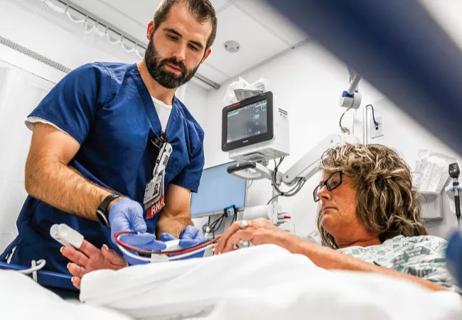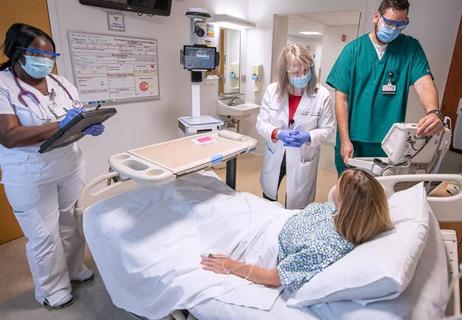The ‘I Commit’ program stresses relationship-building

In late 2017 and early 2018, Cleveland Clinic Marymount Hospital’s HCAHPS scores for nurse communication were lower than the 315-bed regional hospital would have liked. “We know that clinically we provide great care,” says Barbara Zinner, DNP, RN, NE-BC, CENP, Chief Nursing Officer for Marymount Hospital. “But yet we weren’t seeing that reflected in patient perception.”
Cleveland Clinic is a non-profit academic medical center. Advertising on our site helps support our mission. We do not endorse non-Cleveland Clinic products or services. Policy
To bridge the disconnect, Marymount formed a multidisciplinary Nurse Communication Solutions for Value Enhancement (SolVE) team in February 2018. The SolVE team met weekly to discuss and analyze issues with nurse communication, then develop strategies to enhance nurse-to-patient communication.
“It is so important for nurses, who spend so much time with patients, to establish a trusting relationship,” says Zinner.
As part of the continuous improvement project, the SolVE team identified that making a personal connection with patients is key to effective communication. In March 2018, it implemented a three-step process to boost nurse communication called the “I Commit” initiative:
Training for the I Commit initiative was handled by nurse managers on each unit. “We made sure the nurses understood what we were asking them to do and why,” says Zinner. “As soon as we started hearing positive stories about how impactful the three communication steps were, we shared them with the other caregivers so they could hear the benefits of sitting, connecting and communicating.”
Soon after launching the initiative, nurses were leaving patient rooms with endearing stories, such as how much one person loved chicken and waffles and how another served in the armed forces during wartime. “The nurses felt good about what they were doing,” says Zinner. “It changed the relationship between the nurse caregiver and the patient.”
During rounding, one patient shared with Zinner how much it meant to her when the nurse manager sat down with her eye-to-eye. “She told me, ‘I felt like Gaye was taking time and it was just about me,’” recalls Zinner.
The success of the I Commit initiative is also reflected in Marymount Hospital’s nurse communication scores, which rose from under 40% in the top box percentile rank in late 2017 and early 2018 to 69% in August 2018 and 86% in September 2018. This year’s COVID-19 pandemic presented challenges, but the inpatient units are re-committing to the initiative as cases subside.
“It’s all about building trust and building relationships,” says Zinner. “What better way to do that than to stop and sit with a patient? It says to patients, ‘You matter so much to me that I’m going to spend time with you. You matter so much to me that I want to connect with you as a person. You matter so much to me that I want you to know everything about your care.’”

Nurses play key role in comprehensive lifetime treatment program

Compassionate care requires nurses to see beyond medical conditions to understand the complete patient

Akron General and Union Hospital increase throughput and patient satisfaction by rethinking their approach to care

Adding humor to your communication toolbox can help put patients at ease and create connections with colleagues

Aromatherapy initiative promotes a healing environment

Insight on caring for patients who lack adequate insurance, a social support system or financial stability

How clear, concise language can bridge the gap between providers and patients

Specially appointed room serves as safe space for families